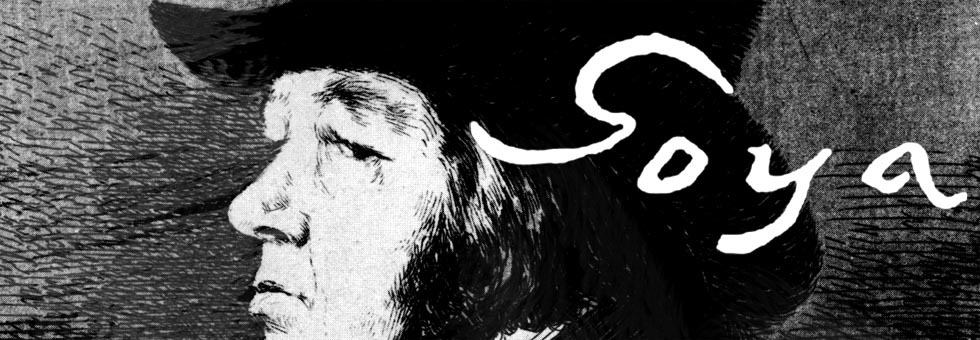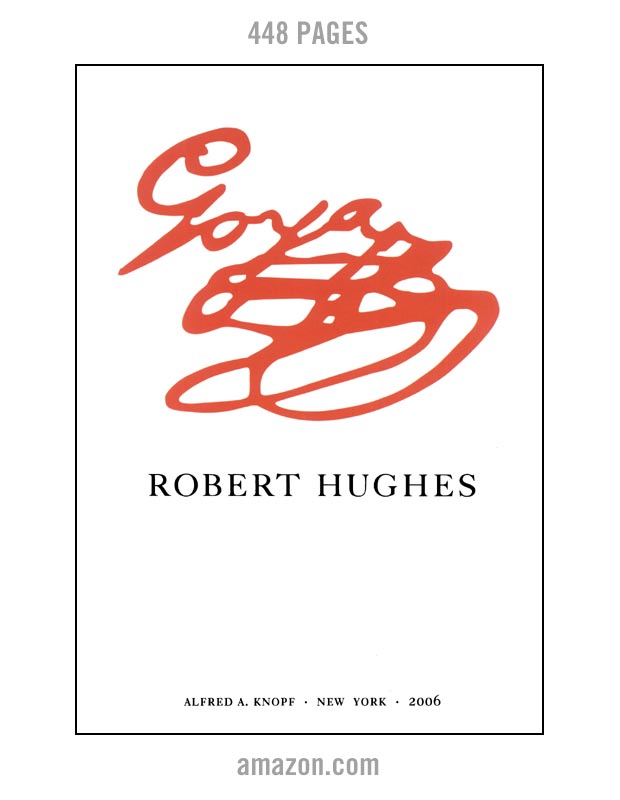Goya and Mirrors
JUNE 27, 2008"Colossus" by an assistant, claims Prado
The long-running dispute over 'Colossus' (also often titled "The Giant" or in the Spanish 'El Coloso') has been going on since at least 2001 when Goya scholar Juliet Wilson-Bareau stated the painting was probably by someone else. Research on this has reached the point that the Prado is virtually giving this opinion "official" status:
Danny Wood at the BBC online wrote:
"The Colossus, painted early in the 19th Century, is traditionally attributed to Francisco Jose de Goya.
But museum experts now say that an investigation has revealed new information about the possible artist.
The revelations follow the identification of two initials - AJ - at the bottom of the canvas.
According to the Prado's investigators, those initials link the work to Asensio Juli, a friend and collaborator of Goya.
The painting depicts a giant walking through a landscape as people flee in panic.
The style of the Colossus was thought to be connected to paintings by the artist about Spain's war of independence against the French.
But, on the basis of their ongoing investigation, the Prado's specialists say they refute the view that Goya is the painter."
The identification of Asensio Juli seems to answer the caution given by Goya writer Sarah Symmons in our interview from 2006:
"The question with Goya is that if he didn't paint works like The Colossus, the New York Majas, or the Black Paintings, then we have to find a new artist as their author. If there were such an anonymous artist who for various reasons wanted to keep their identity a secret, then it's a challenge to find out who they were. I know some people have suggested Javier Goya, but I don't believe that."
The UK Telegraph has more on the Prado announcement, written by Elisabeth Nash from Madrid:
"... in an announcement set to raise a storm in the art world, the museum said yesterday that the celebrated El Coloso was not by the Spanish master after all, and was probably painted by a pupil in his studio.
In a devastating critique, the museum's chief Goya specialist said the painting, made during Napoleon's occupation of Spain after 1808 and long seen as one of the artist's most dramatic portrayals of the horrors of war, was "a pastiche".
"Stylistically, it is completely alien to Goya," said Manuela Mena, the Prado's senior Goya specialist who has studied El Coloso and doubts over its attribution for nearly 20 years. She also revealed doubts over at least three other Goyas held by the Prado.
..."The person who painted the bulls in El Coloso knew nothing about the anatomy of a bull – which Goya knew everything about," Ms Mena said. "The donkey looks like a furry toy, nothing like Goya's perfectly executed donkeys of the same period. None of the details correspond to the Goya we know."
Further reading: Our page on El Coloso
AMAZON
Goya The Terrible Sublime - Graphic Novel - (Spanish Edition) - Amazon
"From this headlong seizure of life we should not expect a calm and refined art, nor a reflective one. Yet Goya was more than a Nietzschean egoist riding roughshod over the world to assert his supermanhood. He was receptive to all shades of feeling, and it was his extreme sensitivity as well as his muscular temerity that actuated his assaults on the outrageous society of Spain." From Thomas Craven's essay on Goya from MEN OF ART (1931).
"...Loneliness has its limits, for Goya was not a prophet but a painter. If he had not been a painter his attitude to life would have found expression only in preaching or suicide." From Andre Malroux's essay in SATURN: AN ESSAY ON GOYA (1957).
"Goya is always a great artist, often a frightening one...light and shade play upon atrocious horrors." From Charles Baudelaire's essay on Goya from CURIOSITES ESTRANGERS (1842).
"[An] extraordinary mingling of hatred and compassion, despair and sardonic humour, realism and fantasy." From the foreword by Aldous Huxley to THE COMPLETE ETCHINGS OF GOYA (1962).
"His analysis in paint, chalk and ink of mass disaster and human frailty pointed to someone obsessed with the chaos of existence..." From the book on Goya by Sarah Symmons (1998).
"I cannot forgive you for admiring Goya...I find nothing in the least pleasing about his paintings or his etchings..." From a letter to (spanish) Duchess Colonna from the French writer Prosper Merimee (1869).
GOYA : Los Caprichos - Dover Edition - Amazon




